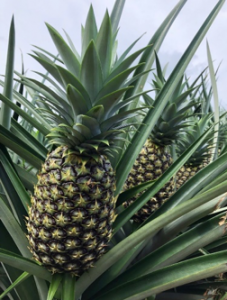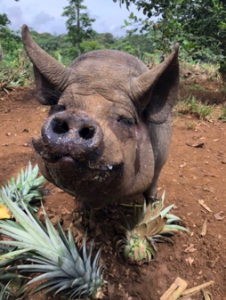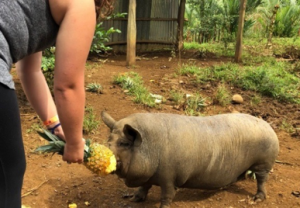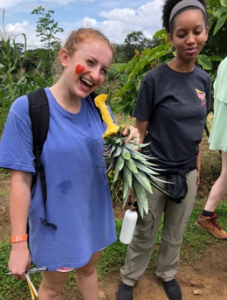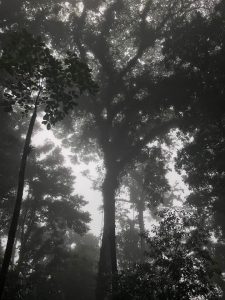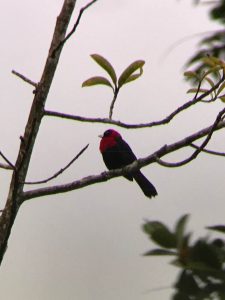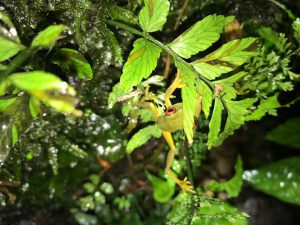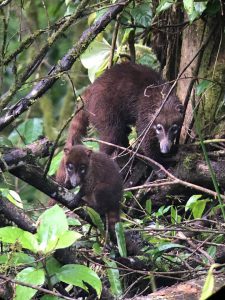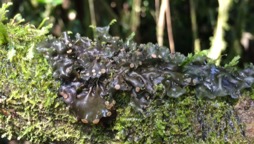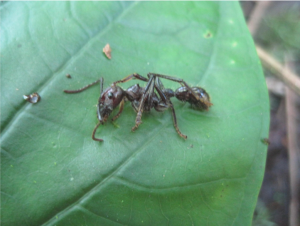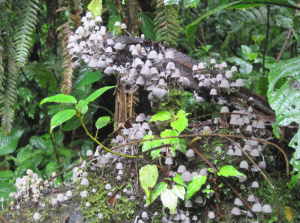Costa Rica is home to a large number and of beautiful and unique frog species. During our travels throughout many biological reserves, we were able to explore this diversity.
 Throughout our three months here we have heard many dink frogs on our night hikes. These frogs make a very loud noise that sounds exactly like a “DINK!” but for as loud as they are they are actually very difficult to find. On one of our night hikes in the Veragua Rainforest we were privileged enough to see many dink frogs along the trails. The frogs are very small, have bumpy skin, and have a darker skin during the day that becomes pink or tan at night. One of our herpetologist guides said he had been studying frogs in the Veragua forest for years and saw 8 of the 12 dink frogs he had ever seen on our night hike.
Throughout our three months here we have heard many dink frogs on our night hikes. These frogs make a very loud noise that sounds exactly like a “DINK!” but for as loud as they are they are actually very difficult to find. On one of our night hikes in the Veragua Rainforest we were privileged enough to see many dink frogs along the trails. The frogs are very small, have bumpy skin, and have a darker skin during the day that becomes pink or tan at night. One of our herpetologist guides said he had been studying frogs in the Veragua forest for years and saw 8 of the 12 dink frogs he had ever seen on our night hike.

Red eyed tree frogs are very well known because of their distinct coloration of green skin, huge bright red eyes, and oftentimes bright blue stomachs with yellow stripes along their sides and underbelly. When threatened, they crouch down so their bright blue underbelly and legs are covered up by their green sides and they close their eyes with a yellow patterned eyelid to cover up their bright red eyes. These frogs are endemic to Costa Rica so it was very exciting to be able to see so many throughout the different areas we traveled to, especially in the Veragua Frog Reserve.
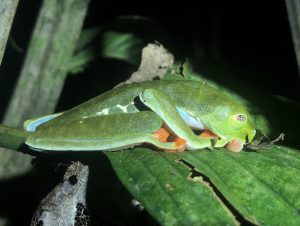

In Veragua we also learned about a few of the research projects that the naturalists were overseeing, including a project with the tiger frogs. Tiger frogs have dark green bodies, bright orange underbellies and with orange and black stripes along their sides and legs. These frogs are endangered and their numbers are dramatically declining, so the researchers were studying their natural habitats to determine their main cause of death. They created artificial ponds around Veragua and found that 64% of their eggs are killed by predators. Of these deaths, 90% are from wasps and 7.5% are due to snakes. One other thing they found was that Tiger Frogs would often lift their abdomen to look like a snake as a means of defense.
Strawberry dart frogs are very small, have red bodies with black 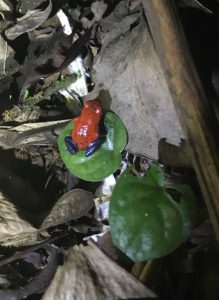 speckles and usually have blue rear legs. These frogs are excellent mothers. They lay their eggs in ponds and once hatched, carry their tadpoles on their back one by one into a little pool of water inside of bromeliad plants. The mother then returns to each bromeliad to feed the tadpoles unfertilized eggs until they grow into little froglets. The unfertilized eggs contain the compound that the frogs need to make poison, so these tadpoles can become poisonous as a line of defense in their bromeliads. This is different from other poisonous dart frogs which are only poisonous in their adult frog stage. All adult dart frogs obtain and maintain their poison levels by breaking down a compound in the insects that they eat. We saw many strawberry poison dart frogs in the frog sanctuary in Veragua, which was a large open space with plenty of plants. In La Selva we saw a few hopping
speckles and usually have blue rear legs. These frogs are excellent mothers. They lay their eggs in ponds and once hatched, carry their tadpoles on their back one by one into a little pool of water inside of bromeliad plants. The mother then returns to each bromeliad to feed the tadpoles unfertilized eggs until they grow into little froglets. The unfertilized eggs contain the compound that the frogs need to make poison, so these tadpoles can become poisonous as a line of defense in their bromeliads. This is different from other poisonous dart frogs which are only poisonous in their adult frog stage. All adult dart frogs obtain and maintain their poison levels by breaking down a compound in the insects that they eat. We saw many strawberry poison dart frogs in the frog sanctuary in Veragua, which was a large open space with plenty of plants. In La Selva we saw a few hopping 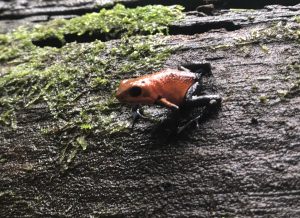 around at the biological station and many at the chocolate farms, especially under some bromeliads near the shelter we made chocolate under. Our guide told us this was because there were mosquitos here eating the shells of the cocoa and that the frogs eat those mosquitos. Being able to travel across many different ecosystems allowed us to see and learn about a wide diversity of frogs in this country. These four species are only a subset of all of the different frogs we were fortunate enough to observe on this trip.
around at the biological station and many at the chocolate farms, especially under some bromeliads near the shelter we made chocolate under. Our guide told us this was because there were mosquitos here eating the shells of the cocoa and that the frogs eat those mosquitos. Being able to travel across many different ecosystems allowed us to see and learn about a wide diversity of frogs in this country. These four species are only a subset of all of the different frogs we were fortunate enough to observe on this trip.

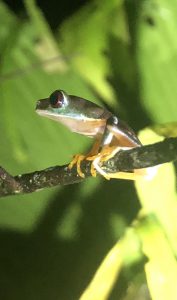
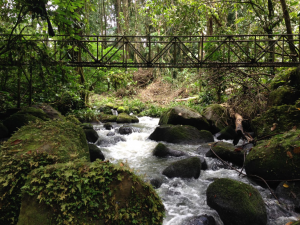
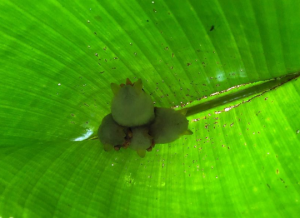
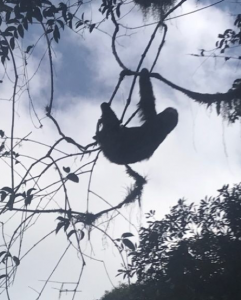
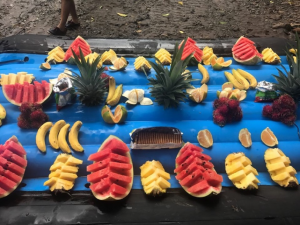
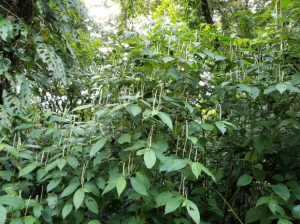
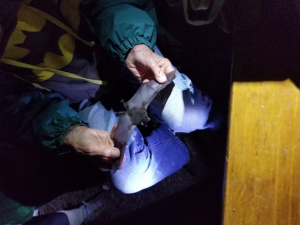 e species form leks, where a group of males gathers to display courtship behavior and attract females.
e species form leks, where a group of males gathers to display courtship behavior and attract females.

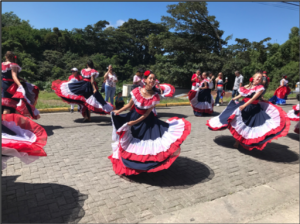


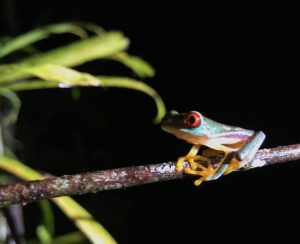
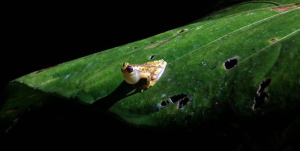
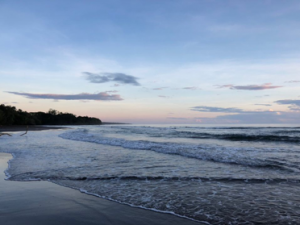

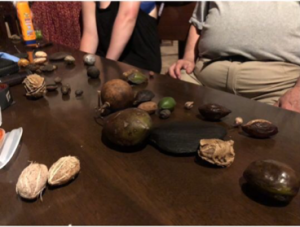
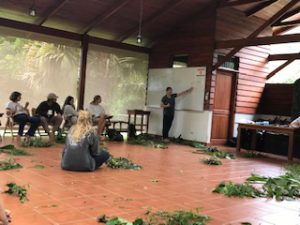
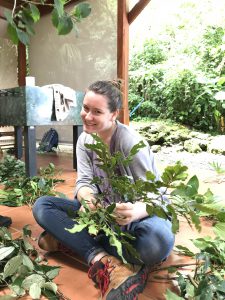
 of these plants, Dr. Lieberman taught us their importance and usage. To our surprise, we could effortlessly sort our plants into families solely using the simple structural observations we had made throughout the whole lesson. By the end of the lecture, not only had we learned the family names for these tropical plants, we also familiarized ourselves with plant structures to help us identify plants back home. “Imagine if I dropped you in a remote untouched area,” Dr. Lieberman explained, “there would be no internet, no naturalists, no books. The only way to identify the plants would be through the same simple observations that you have made today.” Thanks to the Lieberman’s, we can now do this, and we gained intuitive knowledge for plant taxonomy.
of these plants, Dr. Lieberman taught us their importance and usage. To our surprise, we could effortlessly sort our plants into families solely using the simple structural observations we had made throughout the whole lesson. By the end of the lecture, not only had we learned the family names for these tropical plants, we also familiarized ourselves with plant structures to help us identify plants back home. “Imagine if I dropped you in a remote untouched area,” Dr. Lieberman explained, “there would be no internet, no naturalists, no books. The only way to identify the plants would be through the same simple observations that you have made today.” Thanks to the Lieberman’s, we can now do this, and we gained intuitive knowledge for plant taxonomy.
